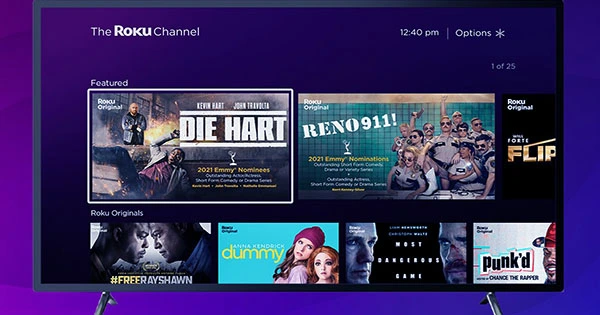Roku’s first quarter of 2022 showed indications of stalling, with total net revenue and subscriber growth both falling short of analyst expectations. Due to several problems, there was also a considerable drop in streaming unit player sales. Roku’s subscriber total was 61.3 million in Q1 despite only adding 1.1 million new active accounts. This was little fewer than the 61.8 million expected by experts. Roku has 60 million accounts by the end of 2021, up 3.7 million from the previous quarter.
Roku’s overall net revenue growth slowed to 28 percent in the first quarter, reaching $737.7 million. The company’s sales increased by 79 percent in the first quarter of 2021. The business expects total net revenues to increase 25% year over year to $805 million in the second quarter, which is lower than the average forecast of $815.7 million. In addition, Roku reported a 12% drop in streaming unit player sales year over year. COVID-19, as well as the continuous supply chain issue and inflation, disrupted business patterns, according to the corporation.
In a letter to shareholders, CEO Anthony Wood and Chief Financial Officer Steve Louden wrote, “We have delivered solid performance in a challenging operating environment and expect to continue to navigate through macro headwinds, including inflationary pressures, geopolitical conflict, and supply chain disruptions.” The reduced prognosis, which is based on persistent macro challenges, may contribute to volatility in the coming months, similar to its competitors. Netflix, for example, had its stock plummet 35.1 percent after reporting disappointing first-quarter statistics.
This is the company’s lowest point since 2004. Despite being the most popular streaming platform in the United States, Canada, and Mexico, Roku’s stock has lost 6% in the past week, 20% in the previous month, and more than 70% in the last year. While the stats aren’t as impressive, the market has gotten more volatile as newer streaming players outperform older ones. There’s a lot in Roku’s way, and the new Charter-Comcast effort as a new media aggregator may provide some serious opposition. Over the course of several years, Charter will invest $900 million to the initiative.
Roku, on the other hand, appears unfazed by the competition. During yesterday’s call, Wood mentioned that the costs of streaming technology will be an impediment. It’s quite difficult – especially for a beginner player. Given how long we’ve invested in our platform and how long our competitors have invested in theirs, it’s difficult for you to conceive how they’ll be successful. However, to be competitive, you must amortize that expense across a bigger and larger installed base. The importance of scale cannot be overstated.
Regardless of how many competition it confronts, the business believes it will remain the top-selling TV OS system in the country. Roku has been competing against big firms like Google and Amazon for years, but the reason it continues to succeed is that it is successful in both streaming players and smart TVs, rather than just one or the other, according to Wood. Roku OS 11, the most recent version of its streaming TV software, was released in March. This centered on personalizing the Roku platform, including the new Roku Photo Streams feature, among other things.
For the most part, the Roku Channel had a solid quarter. Streaming hours increased this quarter, with a total of 20.9 billion hours, up 1.4 billion from the previous quarter and up 14%. Roku’s customers watched 73.2 billion hours of entertainment last year, according to the firm. Lionsgate and the Roku Channel announced a multi-year arrangement earlier this week in which the free platform would be the exclusive home for forthcoming theatrical releases for two consecutive periods through 2024.















